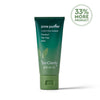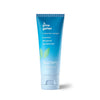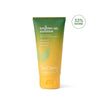Salicylic Acid vs. Benzoyl Peroxide
By Abby Vinas
Acne Treatment
•
0 Comments

When it comes to acne treatment, dermatologists and skin care companies generally turn to two key ingredients: benzoyl peroxide and salicylic acid. These ingredients have been touted as acne-fighting wonders for patients suffering from mild to moderate acne and both are present in a variety of over-the-counter and prescription topical acne medications.
A majority of treatments available contain one or both of these components, but there is a vast difference between their effects. Learn about the differences between using benzoyl peroxide or salicylic acid as an acne treatment solution.
So how do you know which to use or why exactly these two ingredients are often used in acne treatment?
Salicylic Acid
For decades dermatologists and skin care professionals have prescribed salicylic acid for acne treatment and other skin conditions. Salicylic acid, known medically as ortho-hydroxybenzoic acid, is the primary ingredient in aspirin and was originally made out of a complex carbohydrate found in the bark of willow trees. It's also a main ingredient in our 3-step Clear Skin Routine. It has been proven to be a useful pain reliever and was for many years considered a vitamin, given the moniker Vitamin S.
These days, salicylic acid is one of the most important components when it comes to effective acne treatment, for a variety of reasons.
Medicinal use of salicylic acid was first documented back in 500 BC by the Ancient Greeks, but it wasn’t until recent centuries that its properties for skin care were studied. A man named Johann Buchner first distilled salicin from willow bark, and in 1829 French chemist Henri LaRoux perfected this extraction. Raffaele Piria then discovered a methodology of converting this extract into a chemical which becomes salicylic acid when oxidized. It wasn’t until the 1900s that scientists truly began to dig in depth to the properties of salicylic acid as an acne treatment. Today, salicylic acid is one of the most popular acne treatment solutions for those suffering from mild to moderate acne.
Clearer skin in as little as two weeks.
This 3-step routine combines the most effective (clinically-proven) acne fighting ingredients with powerful plant intelligence to leave your skin nourished, refreshed, and clear.
Learn More
How Does Salicylic Acid Treat Acne?
Salicylic acid is what is called a keratolytic, which means it’s an excellent exfoliant. This technical term refers to this ingredient’s ability to help soften keratin, which is a protein that forms part of the skin’s structure. This softening helps loosen scaly skin, which makes it easier for dead skin cells to slough off. Because of its exfoliating properties, salicylic acid is effective in permeating the skin’s top layer, working its way into the pores and dissolving any back up of dead skin cells. Not only does it clear clogged pores, but it also helps the top layer of the epidermis shed, which prevents future pore blockages.
As it is a beta hydroxyl acid (and in fact, the only BHA used in skin care) salicylic acid can penetrate and break down fats and lipids when applied topically. This means it can break down the fatty compounds found in the sebum that clogs up pores.
Salicylic acid helps increase cell turnover, meaning your skin will regenerate faster and open up the pores. It also helps increase the production of collagen, which can help fill in any indentations in the skin, making it appear tighter and healthier.
Salicylic acid can stimulate circulation, which can be essential for the proper treatment of acne. This heightened circulation helps move oil out of the follicle at a faster rate, lessening the sebum built up in the pore that can lead to blockages that result in pimples.
Salicylic Acid as an Anti-Inflammatory Agent
Salicylic acid works as an excellent anti-inflammatory agent. As mentioned earlier, it has a close relationship to aspirin, and features many of its anti-inflammatory properties, working to soothe and calm the skin. This can be essential for those dealing with the swelling and inflammation associated with mild, moderate, and severe acne.
Does Salicylic Acid Hurt?
If the type of acne you have is resulting in broken skin or open sores, you may experience a mild stinging sensation when applying a salicylic acid solution, but this is temporary and not harmful. If you are wondering how to get clear skin without the pain, steer clear of products with extremely high concentrations of the ingredient. In BioClarity products, it is safe to use and helpful for beginning to clear up acne blemishes.
The Importance of Concentration
In order for salicylic acid to be an effective acne fighter, you must find a product with the right concentration. Generally, the stronger the concentration of salicylic acid, the more helpful it is against acne breakouts. You’ll find salicylic acid in a variety of strengths, usually between .05 to 2 percent. What separates BioClarity’s salicylic formula from the rest of the pack is the ability to provide the highest allowable dose of this acne-fighting ingredient.
The Importance of pH Balance
The right pH balance is essential when it comes to using salicylic acid as an acne treatment. It must have a pH of 4 or lower to be acidic enough to unclog the pores that contain harmful acne bacteria, dead skin cells, and hardened sebum. Products that contain a higher pH balance won’t help open the pores, rendering them useless in the treatment of acne.
Consistency is Key
Using a product with salicylic acid as an acne treatment means remaining committed to your skin care regimen. Some find that their acne is worsened for the first few days, but these breakouts are usually cleared to reveal younger looking, vibrant clear skin within a few weeks’ time. It’s important to use your BioClarity regularly and continuously to keep your skin looking clear and vibrant. This consistent use will prevent your pores from becoming clogged again and leave the skin soft and supple.
Acne Scars and Salicylic Acid
Those who have suffered from more severe forms of acne are often left to deal with scarring and hyperpigmentation long after their pimples have cleared up. Salicylic acid can aid in the appearance of these marks by peeling off the top layer of the skin, exfoliating the layer left behind and smoothing the surface of the skin. It also encourages collagen production deep within the skin’s dermal layers that will result in new skin that exhibits fewer blemishes. Some find that internal ingestion of certain vitamins can also help with acne scarring. The connection between Vitamin B5 and acne has long been touted as a miracle cure; it turns out this essential vitamin might actually speed up healing. What does that mean for your skin? Using a topical treatment of salicylic acid and a diet filled with Vitamin B5 could work in your favor when it comes to combating breakouts.
Other Uses of Salicylic Acid
Salicylic acid is useful for skin concerns beyond acne. It has been used for a variety of purposes and in the treatment of a vast array of skin conditions.
Psoriasis
Psoriasis is a skin condition characterized by large, scaly, and itchy patches and is caused by an overactive immune system that triggers skin inflammation which results in increased skin cell production. This excess of skin cells makes it harder for the body to shed these skin cells, leaving dead cells to pile up on each other. Salicylic acid can help remove the scales that appear on patches of psoriasis outbreaks and removing this top layer of dead skin can allow other medications used for psoriasis work better. Many also turn to sulfur, as this ingredient can provide similar exfoliation. If sulfur works for psoriasis issues, does sulfur prevent acne? Unfortunately not, and it turns out too much sulfur can actually dry out the skin and worsen certain skin conditions, including acne breakouts.
Ichthyoses
Ichthyoses is a skin condition characterized by scaly patches of skin that can be thin or thick. According to recent studies, 300 babies are born each year with a form of ichthyoses, and it generally shows up at birth or within a child’s first year. While there is no cure currently for this skin condition, salicylic acid treatments can be used to lessen its appearance by helping the epidermis shed dead skin cells.
Dandruff
Dandruff, also known as seborrheic dermatitis in more severe cases, is characterized by white or yellow flakes on the scalp, and can be accompanied by itching and redness. Many dermatologists and health care professionals advise patients dealing with dandruff to use a shampoo that contains salicylic acid. As noted earlier, salicylic acid helps loosen scaly skin, making it easy to wash out in the shower.
Warts
Salicylic acid is a popular treatment for the removal of warts, and great for individuals looking to avoid surgery and other more invasive removal methods. All warts are caused by strands of HPV, and they can appear on virtually any area of skin on the body. Treating warts with salicylic acid means using products with extremely high concentrations that will slough away the outside layers of the wart and can aggressively reduce the size of a wart within days. It is not as harsh on the surrounding skin as other methods and is inexpensive to secure, making salicylic acid a top choice for those looking to treat warts. Word of warning: Do not use high concentrations of salicylic acid on genital warts, warts found on the mouth or inside the nose, and on warts that have hair growing out of them. It's also worth noting that many use hydrogen peroxide to treat their warts and acne conditions alike. Does hydrogen peroxide cure acne? Most definitely not. This solution can actually burn the skin, so it's best to avoid or use in small amounts.
Salicylic acid is safe and gentle on almost all skin types, and is especially effective for adult skin. It doesn’t result in peeling or flaking and actually works to reduce redness and irritation.
Benzoyl Peroxide
What is benzoyl peroxide and how can it be used to help you get the clear skin you desire? Benzoyl peroxide is found in a great deal of acne treatment products, but this powerful ingredient can result in a variety of adverse effects. Often used in conjunction with salicylic acid, applying benzoyl peroxide topically can help fight the bacteria found in pimples, drying out infection and cutting down a number of harmful bacteria on the skin.
Benzoyl peroxide is not a new drug. In the early 20th century, Loevenhart and Kastle used this solution in their research on potatoes and also made note of the benefits that benzoyl peroxide could have on the treatment of burns and specific leg tumors. In the 1920’s, a scientist named Jack Breitbart working for Revlon Corporation developed benzoyl peroxide for acne treatment. By mid-century, there were numerous benzoyl peroxide products available for sale designated for the treatment of leg ulcers and wounds. In the 1960s, William Pace started treating his acne patients with a mix of precipitated Sulphur cream and benzoyl peroxide. As the years went on, the range of uses for benzoyl peroxide expanded, including the treatment of athlete’s foot and seborrheic dermatitis.
Does Benzoyl Peroxide Work?
Benzoyl peroxide does work at alleviating acne symptoms, but can sometimes come at the cost of worse side effects. So how exactly does it combat pimples? Benzoyl peroxide is a peroxide, the technical term for an unstable bond between two oxygen atoms that can create free radicals. These free radicals kill P. acnes bacteria by destroying the cell walls. Benzoyl peroxide can also peel the outer layer of the skin, and bacteria don’t develop a resistance to this ingredient. While these seem like fantastic aspects of an acne treatment, the same things that make benzoyl peroxide effective for treating acne can result in worsened breakouts and sensitive skin.
The Drawbacks of Benzoyl Peroxide
Benzoyl peroxide can result in a bevy of harsh side effects, and products that contain this ingredient can often do more harm to the skin than good depending on skin type and sensitivity.
Dryness and Peeling
Benzoyl peroxide is almost synonymous with dry skin; the same reason it’s useful as an acne fighter is the reason it might be detrimental to your skin health. Benzoyl peroxide dries out the oils on our skin, and while excess oil results in acne, too little results in dull, irritated skin. This powerful ingredient can wreak havoc on the skin, drying it out to the point of scaliness, flaking, and peeling. If your skin is too dry, it may be impossible for other medicinal ingredients to permeate the skin.
Inflammation
If benzoyl peroxide comes into contact with any of the mucous membranes in your body, the reaction can be inflammation. This is most commonly observed in the eyes, but may also occur in the mouth or nose.
Benzoyl Peroxide and Aging
Many individuals that use benzoyl peroxide notice their skin develops more wrinkles, making them look markedly older than they actually are. Benzoyl peroxide generates oxygen free radicals, and these attack the bacteria on the skin. However, according to Smartskincare.com, these free radicals can also accelerate the rate at which your skin ages, similar to sun exposure. The dryer your skin, the more brittle it becomes. This can make existing wrinkles more visible and this aging reaction makes benzoyl peroxide an especially poor skin care choice for older patients.
Good Bacteria Vs. Bad Bacteria
Benzoyl peroxide can effectively kill bacteria, but it cannot tell the difference between good strains and bad strains. This means it will kill all bacteria it comes into contact with, effectively wiping out the bacteria strains that help you combat infections. Bacterial imbalance can be what causes acne or inflammation on the skin, and cause damage to your immune system response.
Benzoyl Peroxide as a Bleaching Agent
Benzoyl peroxide is a harsh solution that can cause bleaching. It may cause your skin to look whiter, and can affect the color of your hair (including your eyebrows) if it comes into contact with the same strands regularly and repeatedly. Benzoyl peroxide can also bleach clothing and other materials.
Sun Sensitivity
Benzoyl peroxide can cause photosensitivity or an increased sensitivity to the sun. This solution reduces the skin’s tolerance to UV rays, and without proper protection, sun burns and irritation after exposure are likely.
Skin Discoloration
Some skin types struggle with post-inflammatory hyperpigmentation after severe acne breakouts have healed. As this inflammation results in an increased production of melanin, portions of the skin affected may turn a darker shade. As benzoyl peroxide can further irritate the skin, a more severe inflammatory response is triggered, resulting in an increased amount of melanin. While salicylic acid can have a similar effect, benzoyl peroxide tends to be much harsher and make these marks much more pronounced.
Allergies
Common allergic reactions that result from benzoyl peroxide include rashes and hives, along with other skin inflammations.
Who Shouldn’t Use Benzoyl Peroxide?
Benzoyl peroxide can be harsh on various skin types, and those with very sensitive skin are advised to only use this solution as a spot treatment product. Higher percentages of benzoyl peroxide can result in immediate flaky, dry skin.
While not everyone suffers from these side effects, the general population has seen a great number of people suffering one of the aforementioned reactions to benzoyl peroxide. Due to these valid concerns, At BioClarity we excluded this harmful ingredient from our effective skin care regimen to ensure no redness, irritation, or peeling.
FDA Warnings
Originally, benzoyl peroxide was categorized as a Category I ingredient, deeming it safe for use. However, in 1995, the FDA changed this classification to a Category III (safety is uncertain) because of research that noted benzoyl peroxide’s possible role in tumor promotion. It remains in this categorization currently.
In the European Union, benzoyl peroxide has been banned for use in all over-the-counter skin care products, and cannot be used in any type of food product.
Is Combining Salicylic Acid and Benzoyl Peroxide a Good Idea?
Some companies have created acne treatment products that contain both salicylic acid and benzoyl peroxide, this can actually exacerbate the negative effects experienced with just salicylic acid. The combination of the two solutions can be much too harsh even for skin that is usually not sensitive, and may result in dry, irritated, painful skin.
The Clear Winner
Determining which acne-fighting ingredient is best for your skin can be confusing when inundated with conflicting skin care tips and a variety of products, but when it comes to salicylic acid vs. benzoyl peroxide, salicylic acid comes out on top time and time again. Salicylic acid is the better treatment solution, as it treats the condition that contributes to the presence of acne, sloughing off dead skin cells and breaking down the excess oil that can result in blockages that lead to pimples. Its ability to treat the condition allows your skin to look and feel better over the long term.
In contrast, benzoyl peroxide merely treats a symptom of the condition, killing off bacteria that is only growing because of the presence of dead skin cells and oils. It also comes with a host of negative side effects that can cause damage to the skin. Salicylic acid is a safer, gentler, and more effective option when it comes to the treatment of Acne Vulgaris.
Key Takeaways
- Salicylic acid is less harmful on the skin and causes less irritation, dryness, and pain than benzoyl peroxide.
- Both salicylic acid and benzoyl peroxide are commonly used in acne treatment, but both work very differently on the skin.
- Benzoyl Peroxide can bleach any material it comes into contact with, including towels and clothing.
- Our Clear Skin Routine provides the highest allowable concentration of salicylic acid to help combat acne.
- Our products don’t contain benzoyl peroxide, meaning less pain and irritation for your skin with regular use.
- Benzoyl peroxide can result in premature aging as it exacerbates the look and presence of wrinkles.
- Using benzoyl peroxide regularly can make your skin more sensitive to sun exposure.

Abby Vinas
Abby Vinas has long been an active member of the holistic health community, advocating in favor of its benefits to both our physical and emotional well-being. Her commitment to leading a healthy lifestyle has made her an authority on self-care practices. Abby is passionate about fitness, nutrition, and proper skincare, and is also an avid lover of avocado toast and dog-petting.











